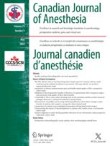
Medicine RSS-Feeds by Alexandros G. Sfakianakis,Anapafseos 5 Agios Nikolaos 72100 Crete Greece,00302841026182,00306932607174,alsfakia@gmail.com
Πληροφορίες
Δευτέρα 20 Απριλίου 2020
The effect of Tegaderm™ versus EyeGard® on eyelid erythema during general anesthesia: a randomized-controlled trial
The effect of Tegaderm™ versus EyeGard® on eyelid erythema during general anesthesia: a randomized-controlled trial:


Αναρτήθηκε από
Medicine by Alexandros G. Sfakianakis,Anapafseos 5 Agios Nikolaos 72100 Crete Greece,00302841026182,00306932607174,alsfakia@gmail.com,
στις
10:29 μ.μ.

Ετικέτες
00302841026182,
00306932607174,
alsfakia@gmail.com,
Anapafseos 5 Agios Nikolaos 72100 Crete Greece,
Medicine by Alexandros G. Sfakianakis,
Telephone consultation 11855 int 1193
Εγγραφή σε:
Σχόλια ανάρτησης (Atom)
Αρχειοθήκη ιστολογίου
-
►
2023
(366)
- ► Φεβρουαρίου (184)
- ► Ιανουαρίου (182)
-
►
2022
(2814)
- ► Δεκεμβρίου (182)
- ► Σεπτεμβρίου (213)
- ► Φεβρουαρίου (264)
- ► Ιανουαρίου (262)
-
►
2021
(3815)
- ► Δεκεμβρίου (229)
- ► Σεπτεμβρίου (276)
- ► Φεβρουαρίου (64)
-
▼
2020
(5754)
- ► Δεκεμβρίου (401)
- ► Σεπτεμβρίου (365)
-
▼
Απριλίου
(843)
-
▼
Απρ 20
(51)
- Medicine
- S
- M
- Liposarcoma of oral cavity: Systematic review of c...
- Intravascular large B‐cell lymphoma presenting as ...
- Dietary habits in Japanese patients with chronic s...
- Autoimmune progesterone dermatitis presenting as r...
- M
- Antibiotics, Vol. 9, Pages 193: Management of a Ca...
- S
- Dry eye induced by exposure to cigarette smoke pol...
- Therapeutic potential of ciclesonide inahalation f...
- The effect of Tegaderm™ versus EyeGard® on eyelid ...
- S
- M
- S
- Epstein–Barr virus (EBV) and polyomaviruses are de...
- Urogenital Abnormalities in Adenosine Deaminase De...
- S
- Fraser Syndrome: A Stumbling Block for the Anaesth...
- Labyrinthine Fistula-Our Experience at a Tertiary ...
- Facial trauma aggravating paediatric orbital cellu...
- Guillain-Barre syndrome and posterior reversible l...
- M
- Hypothermia induced by quetiapine
- Immune Profile of the Nasal Mucosa in Patients wit...
- Mesalamine-induced eosinophilic pleural effusion
- Endoscopy-assisted removal of angle foreign body p...
- S
- Propranolol-induced acneiform eruptions: revisitin...
- M
- S
- M
- S
- M
- S
- Decreased Plasma Maresin 1 Concentration Is Associ...
- Paediatric Posttraumatic Cyst-Like Lesions: A Repo...
- The Bethesda System for Reporting Thyroid Cytopath...
- M
- Efficacy of 0.5% Levofloxacin and 5.0% Povidone-Io...
- S
- M
- Cardiac toxicity of acrolein exposure in embryonic...
- S
- Role of Molecular Chaperones in Carcinogenesis: Me...
- Novel Approaches for Diagnosing and Management of ...
- Ocular Findings in the 16p11.2 Microdeletion Syndr...
- Retropharyngeal internal carotid artery: a review ...
- M
- Lipoteichoic acid of Enterococcus faecalis interfe...
-
▼
Απρ 20
(51)
- ► Φεβρουαρίου (754)
- ► Ιανουαρίου (894)
-
►
2019
(146)
- ► Δεκεμβρίου (19)
- ► Σεπτεμβρίου (54)

Δεν υπάρχουν σχόλια:
Δημοσίευση σχολίου